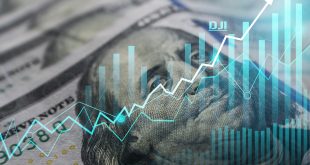The U.S. dollar extended its winning streak against the Japanese yen on Friday, buoyed by robust business activity data that overshadowed signs of softer inflation. The USD/JPY pair climbed for the sixth consecutive session, trading near 152.80 as investors favored the greenback amid growing optimism about the strength of the U.S. economy.
Fresh data showed that the U.S. composite Purchasing Managers’ Index (PMI) rose to 54.8 in October, the strongest level in three months, signaling continued expansion in private-sector activity. The services sector led the gains, with manufacturing output also showing a slight improvement. The report highlighted resilient domestic demand and a pickup in new business, which helped offset the drag from weaker exports and ongoing trade tensions.
At the same time, inflation data released earlier in the week painted a softer picture. Consumer prices rose 0.3% month-on-month in September—slightly below forecasts—while annual inflation edged up to 3.0%. Core inflation, which excludes food and energy, increased modestly and remained below expectations. The figures reinforced expectations that the Federal Reserve will maintain its gradual easing cycle, with markets widely anticipating another rate cut at the upcoming policy meeting later this month.
Consumer sentiment, however, showed a more cautious tone. Survey data indicated a decline in confidence levels in October, as households expressed concern about future economic prospects. Inflation expectations were mixed, with short-term outlooks steady while longer-term forecasts ticked slightly higher.
In Japan, the yen’s weakness persisted despite an uptick in domestic inflation. Headline and core consumer prices both rose to 2.9% in September, marking the first acceleration since May. Nonetheless, the stronger price readings did little to support the currency, as markets remained focused on expectations that the government will soon unveil a new stimulus package to bolster growth. Officials in Tokyo have hinted that additional bond issuance may be necessary to finance the spending plan, adding to fiscal pressures.
Overall, the latest data reaffirmed a growing divergence between the U.S. and Japanese economies. The U.S. continues to show signs of solid business momentum even as inflation cools, while Japan faces the challenge of stimulating growth without further weakening its currency. The result has been a steady rise in the dollar’s strength, with traders watching closely for any signs of official intervention from Tokyo as USD/JPY approaches key levels not seen in decades.
With both the Federal Reserve and the Bank of Japan set to meet in the coming weeks, the currency market is bracing for potential volatility. For now, the dollar’s resilience remains underpinned by confidence in U.S. economic performance—and by a global search for yield that continues to favor the greenback over its low-yielding Japanese counterpart.

 Noor Trends News, Technical Analysis, Educational Tools and Recommendations
Noor Trends News, Technical Analysis, Educational Tools and Recommendations




